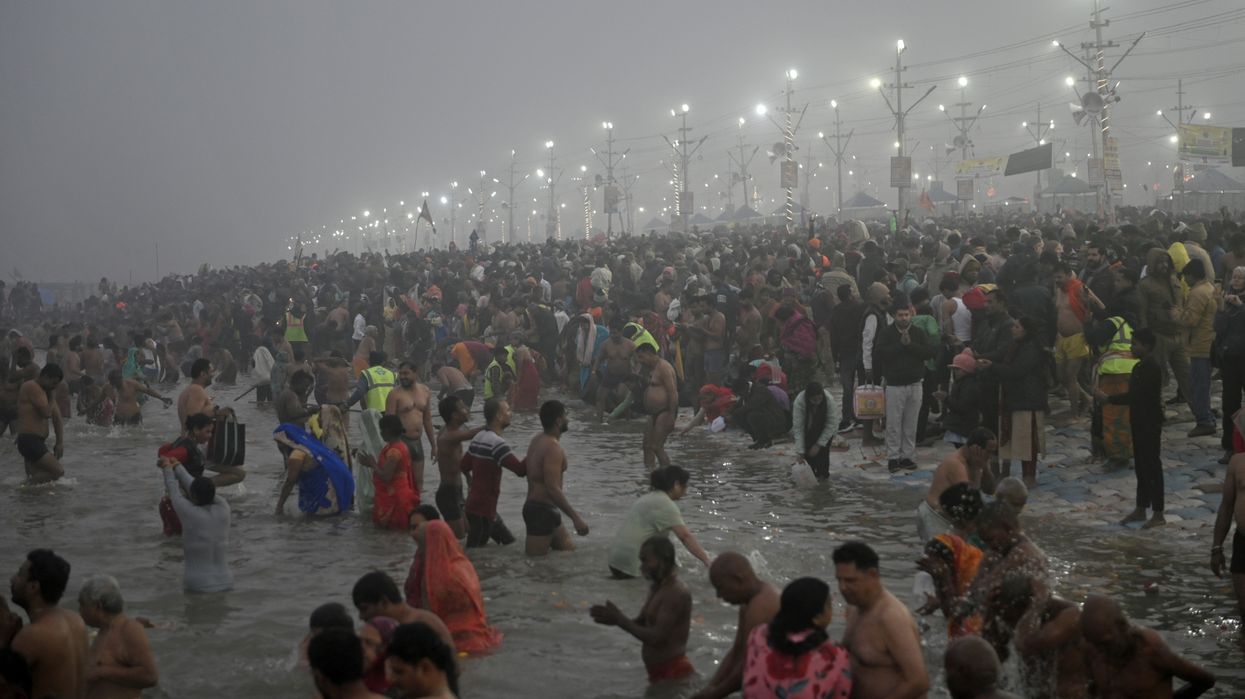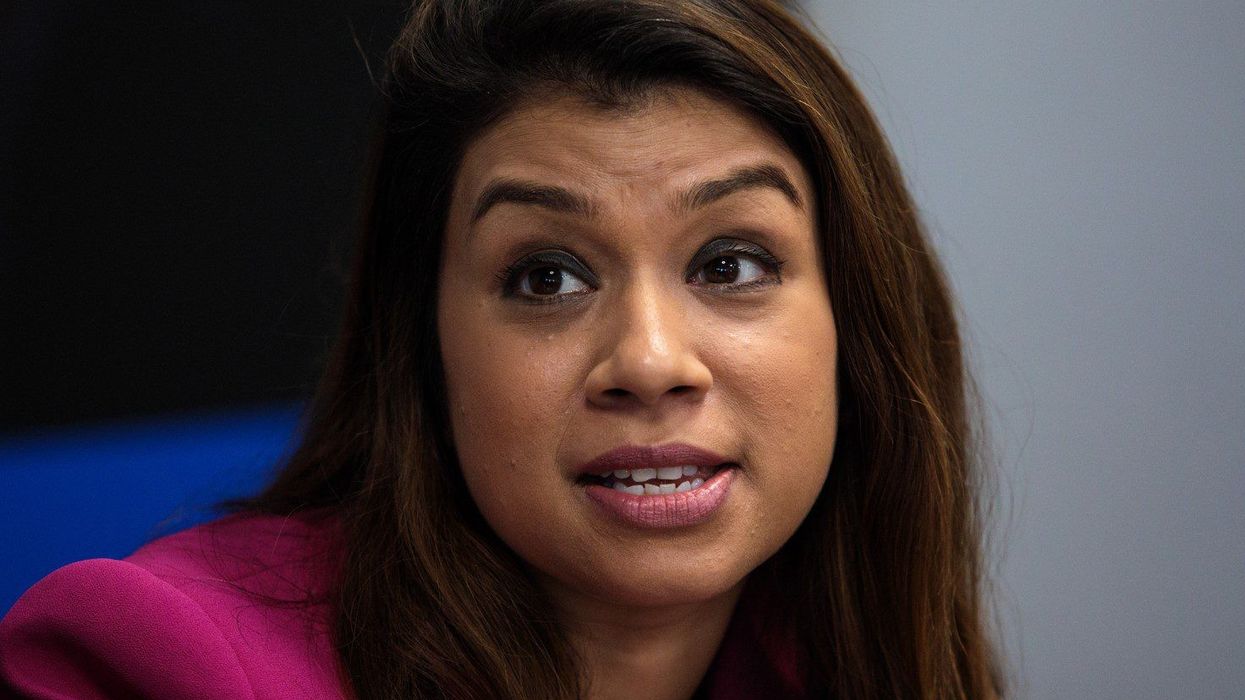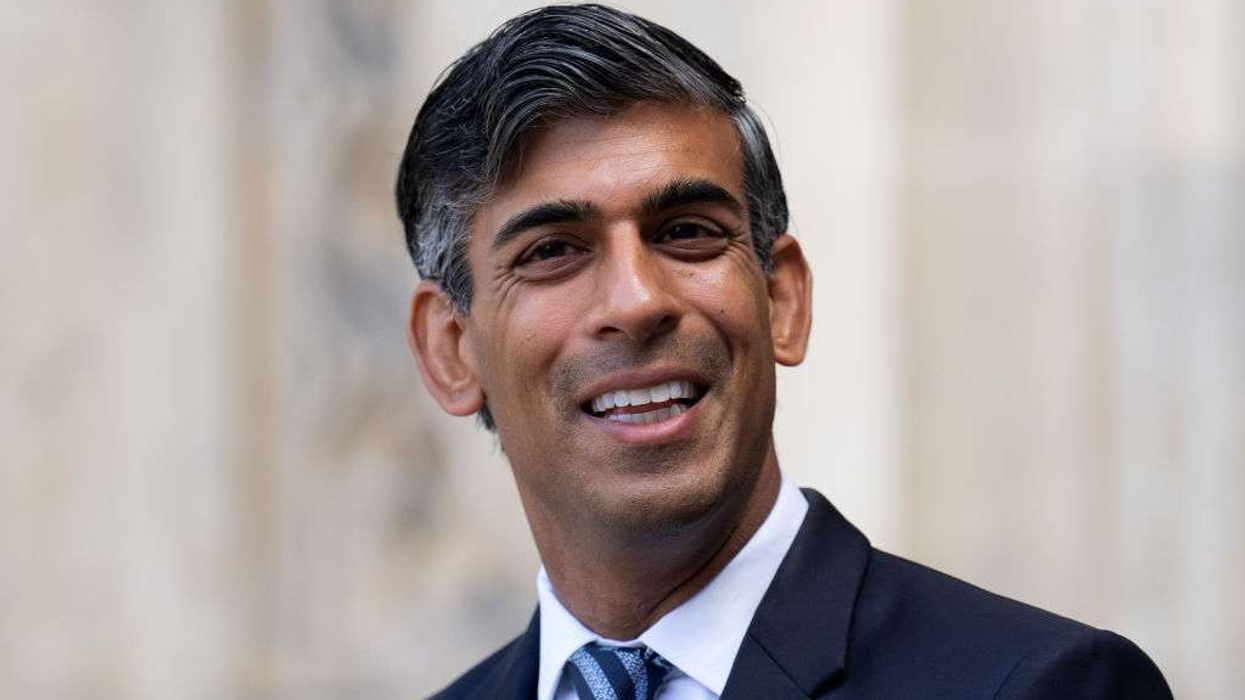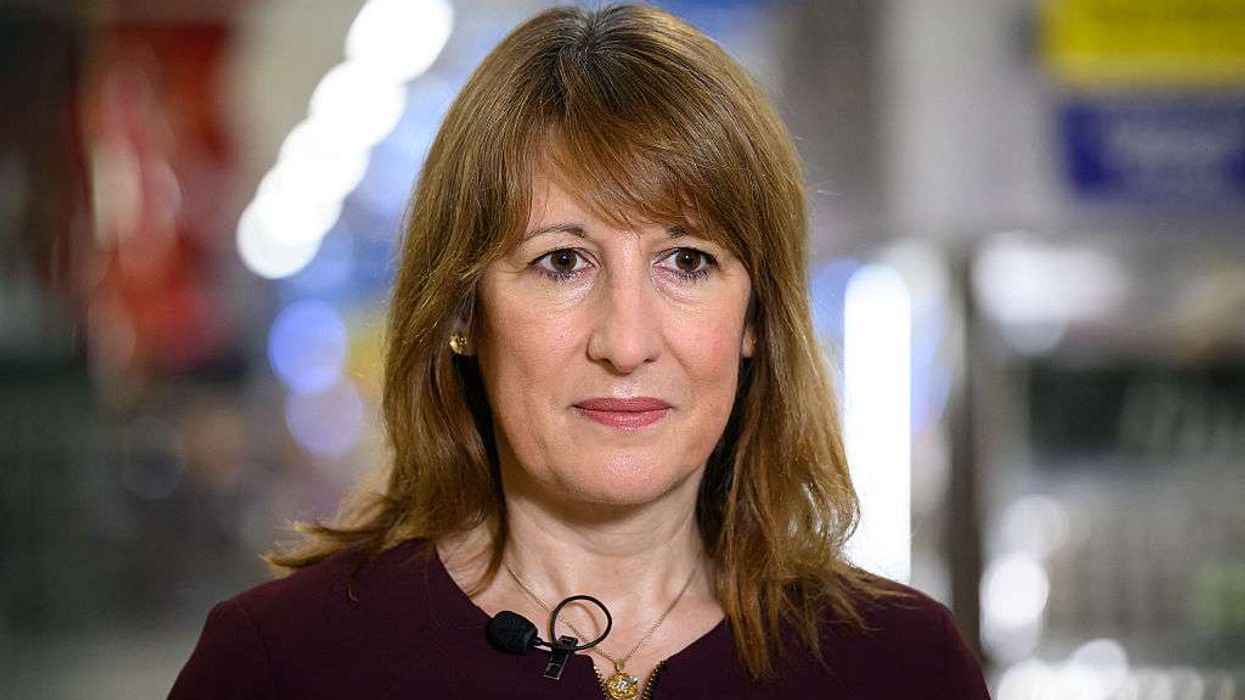THE MAHA KUMBH MELA, one of the largest religious gatherings in the world, began on Monday in Prayagraj in the northern Indian state of Uttar Pradesh, with millions of Hindu devotees taking a ritual dip at the confluence of the Ganges, Yamuna, and the mythical Saraswati rivers.
Organisers expect around 400 million people to attend the six-week festival, which will continue until 26 February.
Pilgrims began arriving in the early hours to bathe in the sacred waters, a ritual believed to cleanse sins and bring salvation. "I feel great joy. For me, it's like bathing in nectar," said 45-year-old Surmila Devi. Reena Rai, a businesswoman from Madhya Pradesh who travelled nearly 1,000 kilometres, said, "As a Hindu, this is an unmissable occasion."
The Kumbh Mela is deeply rooted in Hindu mythology, symbolising the celestial battle between gods and demons over a pitcher of the nectar of immortality. The festival rotates among four cities—Prayagraj, Haridwar, Ujjain, and Nashik—every three years. The Maha Kumbh Mela, held once every 12 years in Prayagraj, is considered the most auspicious.
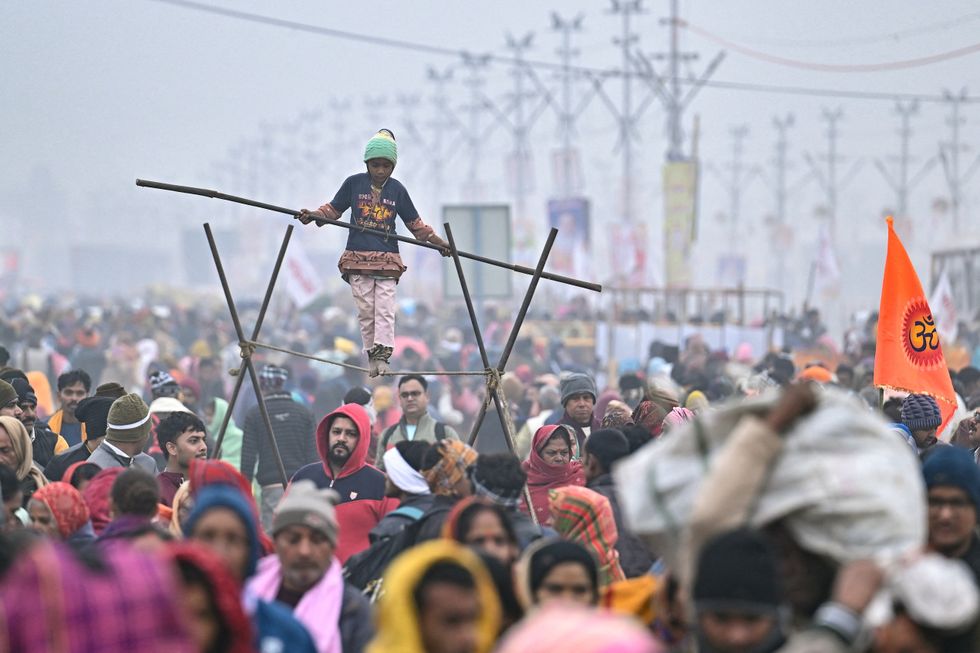
On Monday, over 2.5 million pilgrims were expected to bathe, followed by the "royal bath" on Tuesday, reserved for ascetics.
Saffron-clad monks, ash-smeared ascetics, and devotees chanting "Har Har Mahadev" and "Jai Ganga Maiyya" filled the riverbanks.
Indian prime minister Narendra Modi described the event as a "divine occasion" bringing together "countless people in a sacred confluence of faith, devotion and culture."
Uttar Pradesh chief minister Yogi Adityanath invited people to "experience unity in diversity" at the "world's largest spiritual and cultural gathering."
Massive security and infrastructure for the festival
The scale of the event is immense, comparable to the combined populations of the United States and Canada.
Festival spokesperson Vivek Chaturvedi said, "Some 350 to 400 million devotees are going to visit the mela, so you can imagine the scale of preparations."
Security measures include 40,000 police officers on duty and AI-equipped surveillance cameras for continuous monitoring.
Authorities have set up multiple "lost and found" centres and a mobile app to help reunite lost pilgrims with their families.
A temporary city covering over 4,000 hectares has been constructed along the riverbanks. It includes 150,000 tents, 145,000 restrooms, and 3,000 community kitchens, each capable of feeding up to 50,000 people simultaneously.
Additionally, 68,000 LED light poles have been installed, making the site visible from space.
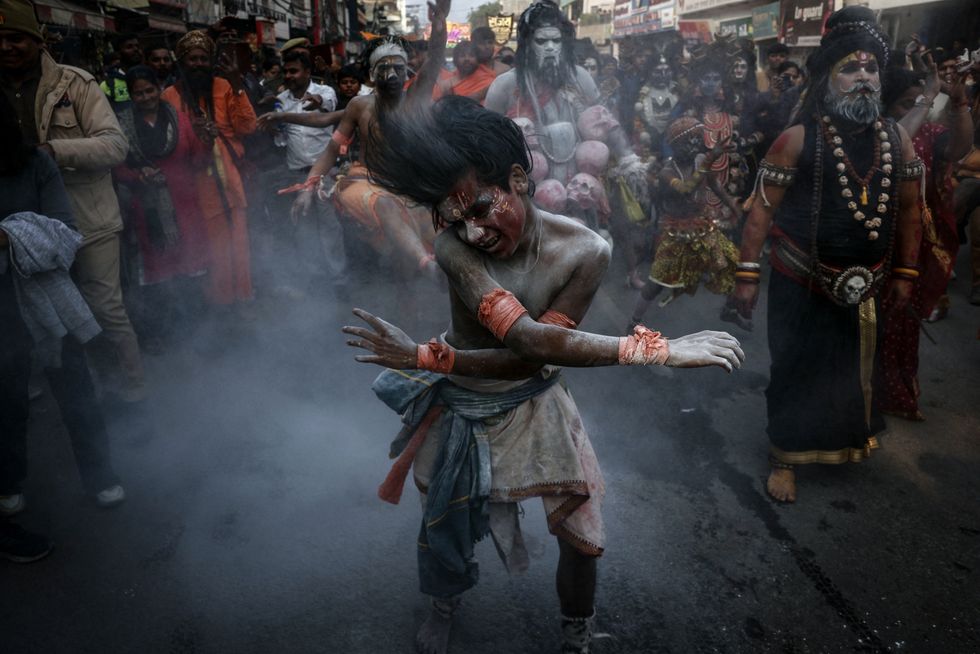
Indian Railways has added 98 trains making 3,300 trips to manage the influx of visitors. About 450,000 new electricity connections have been set up, and the festival is expected to consume more power than 100,000 urban apartments do in a month.
Pilgrims endure long journeys and cold weather
Pilgrims travelled from across India to take part. Jaishree Ben Shahtilal from Gujarat took three days to arrive with her neighbours in a convoy of 11 buses. "I have great faith in God. I have waited for so long to bathe in the holy river," she said.
Temperatures dropped to around 15 degrees Celsius overnight, but devotees remained undeterred. "Once you are in the water, you don't even feel cold," said 56-year-old Chandrakant Nagve Patel. "I felt like I was one with God."
Many first-time visitors expressed mixed feelings of excitement and apprehension. Priyanka Rajput, a fashion model from Delhi, said, "I am excited but now scared because I didn't expect this crowd. This is my first Kumbh, and I came only because my mother is very spiritual."
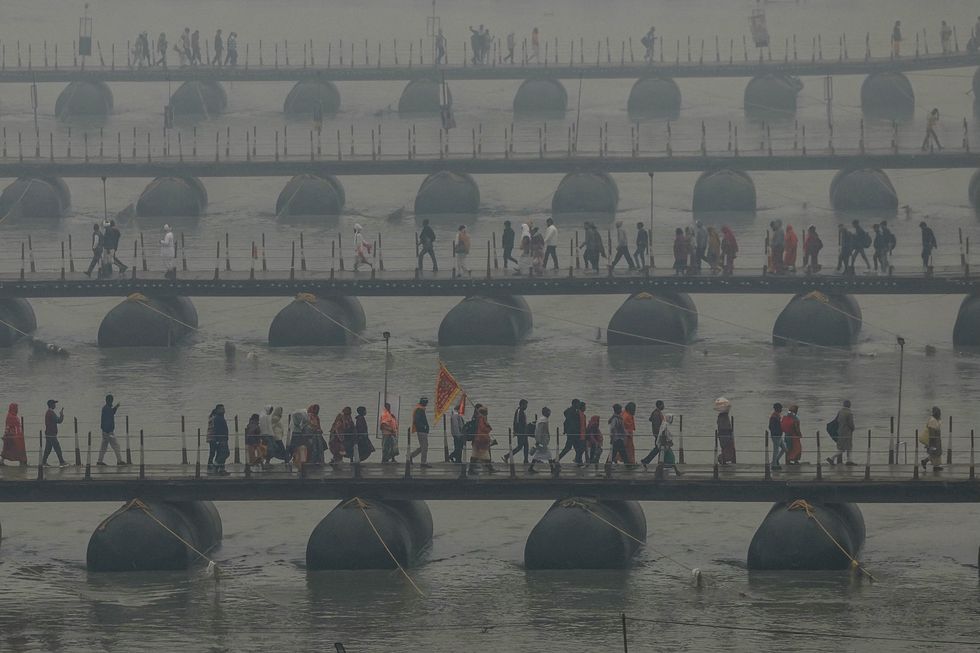
A blend of devotion and government showcase
The festival also serves as an opportunity for the ruling Bharatiya Janata Party (BJP) to showcase its focus on religious and cultural heritage.
"The Maha Kumbh embodies India’s timeless spiritual heritage and celebrates faith and harmony," Modi stated on social media.
The previous "ardh" or half Kumbh Mela in 2019 attracted 240 million pilgrims. In comparison, the annual Hajj pilgrimage in Mecca, Saudi Arabia, draws about 1.8 million participants.
As the Kumbh Mela progresses, authorities continue to manage crowd safety while maintaining the sanctity of the event.
"It's a once-in-a-lifetime opportunity," said Savita Venkat, a teacher from Bengaluru. Government employee Bhawani Baneree from Maharashtra added, "The vibrant atmosphere made my long journey worthwhile."
(With inputs from agencies)
